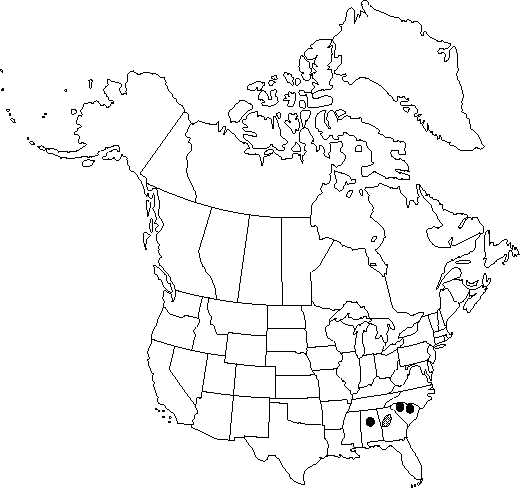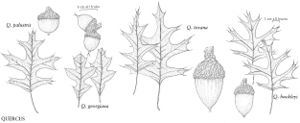Difference between revisions of "Quercus georgiana"
Amer. J. Sci. Arts, ser. 2, 7: 406. 1849.
FNA>Volume Importer |
imported>Volume Importer |
||
| Line 54: | Line 54: | ||
|publication year=1849 | |publication year=1849 | ||
|special status=Endemic;Illustrated | |special status=Endemic;Illustrated | ||
| − | |source xml=https:// | + | |source xml=https://bibilujan@bitbucket.org/aafc-mbb/fna-data-curation.git/src/bb6b7e3a7de7d3b7888a1ad48c7fd8f5c722d8d6/coarse_grained_fna_xml/V3/V3_431.xml |
|genus=Quercus | |genus=Quercus | ||
|section=Quercus sect. Lobatae | |section=Quercus sect. Lobatae | ||
Revision as of 23:01, 27 May 2020
Trees, deciduous, to 15 m. Bark gray to light brown, scaly. Twigs deep red, 1-2 mm diam., glabrous. Terminal buds red-brown, ovoid to subconic, 2.5-5 mm, glabrous or scales somewhat ciliate. Leaves: petiole 6-23 mm, glabrous or with a few persistent hairs. Leaf blade broadly ovate to elliptic or obovate, 40-130 × 20-90 mm, base cuneate to obtuse, margins with 3-5(-7) oblong lobes and up to 10 awns, apex acute; surfaces abaxially glabrous except for conspicuous axillary tufts of tomentum, veins raised, adaxially planar, glabrous. Acorns biennial; cup thin, saucer-shaped, 4-6 mm high × 9-14 mm wide, covering 1/3 nut, outer surface puberulent, inner surface glabrous or with a few hairs around scar, scale tips appressed, acute; nut globose or ovoid, 9-14 × 9-14 mm, glabrous, scar diam. 4-7.5 mm.
Phenology: Flowering spring.
Habitat: Granitic outcrops and dry slopes and knolls
Elevation: 50-500 m
Distribution

Ala., Ga., S.C.
Discussion
Quercus georgiana reportedly hybridizes with Q. marilandica (= Q. ×smallii Trelease) and Q. nigra, although D. M. Hunt (1989) has questioned the validity of the former report.
Selected References
None.
